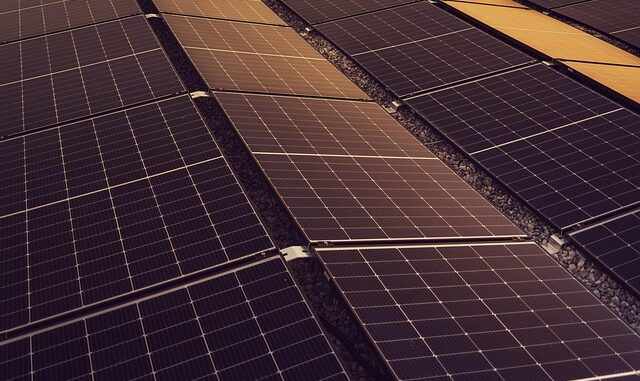
Decarbonising existing buildings is crucial for the UK’s net-zero goals. Implementing effective retrofit strategies can significantly enhance energy efficiency. This article explores key regulations and practical approaches to achieve these improvements.
Understanding Retrofit Regulations
The UK government has set ambitious targets to reduce carbon emissions, with buildings accounting for a substantial portion of these emissions. To address this, several regulations and schemes have been introduced:
-
Great British Insulation Scheme (GBIS): Launched in July 2023, this initiative aims to improve energy efficiency in residential properties by providing funding for various insulation measures. The scheme runs until March 2026 and is overseen by Ofgem. (en.wikipedia.org)
-
Energy Performance Certificates (EPCs): These certificates assess a building’s energy efficiency and are mandatory for properties being sold or rented. Achieving a higher EPC rating can increase property value and appeal.
Successful low-energy building design hinges on careful planning. Focus360 Energy can help.
- Building Regulations: When undertaking retrofitting projects, compliance with local building regulations is essential. These regulations ensure that improvements meet safety and energy efficiency standards.
Effective Retrofit Strategies
Implementing the right retrofit strategies can lead to significant energy savings and reduced carbon emissions. Here are some effective approaches:
-
Enhance Insulation:
-
Cavity Wall Insulation: Filling the gap between external walls with insulating materials reduces heat loss. (homebuilding.co.uk)
-
Loft Insulation: Properly insulating the loft can prevent up to 20% of heat loss. (savills.co.uk)
-
Upgrade Windows and Doors:
-
Double or Triple Glazing: Replacing single-glazed windows with double or triple glazing improves thermal performance. (savills.co.uk)
-
Door Seals: Ensuring doors fit snugly and are properly sealed prevents drafts. (staac.co.uk)
-
Implement Smart Heating Controls:
-
Programmable Thermostats: These devices allow for scheduled heating, reducing energy consumption. (cosypanels.co.uk)
-
Smart Thermostats: Learning household routines, they adjust temperatures based on occupancy patterns, offering remote control and potential savings of 10-20% on heating bills. (cosypanels.co.uk)
-
Adopt Renewable Energy Sources:
-
Solar Panels: Installing solar panels can generate renewable energy, reducing reliance on fossil fuels. (brooktechmaintenance.com)
-
Heat Pumps: Air and ground-sourced heat pumps offer efficient, low-carbon space heating and hot water opportunities for many historic buildings. (historicengland.org.uk)
-
Draught-Proofing:
-
Sealing Gaps: Addressing gaps around doors, windows, and floors can prevent heat loss and improve comfort. (savills.co.uk)
-
Upgrade Lighting:
-
LED Bulbs: Switching to LED lighting can reduce energy consumption by up to 75% compared to traditional incandescent bulbs. (brooktechmaintenance.com)
Conclusion
Decarbonising existing buildings is a vital step towards achieving the UK’s net-zero targets. By understanding and implementing the appropriate retrofit regulations and strategies, property owners can significantly enhance energy efficiency, reduce carbon emissions, and contribute to a more sustainable future.
References
-
Great British Insulation Scheme (GBIS): (en.wikipedia.org)
-
Cavity Wall Insulation: (homebuilding.co.uk)
-
Loft Insulation: (savills.co.uk)
-
Double or Triple Glazing: (savills.co.uk)
-
Door Seals: (staac.co.uk)
-
Programmable Thermostats: (cosypanels.co.uk)
-
Smart Thermostats: (cosypanels.co.uk)
-
Solar Panels: (brooktechmaintenance.com)
-
Heat Pumps: (historicengland.org.uk)
-
Draught-Proofing: (savills.co.uk)
-
LED Bulbs: (brooktechmaintenance.com)


Interesting article! Beyond residential properties, how can these retrofit strategies be effectively applied to commercial buildings, considering their unique energy demands and operational complexities?
Thanks for your insightful comment! Applying these strategies to commercial buildings presents unique challenges. One key difference is the potential for integrating advanced building management systems (BMS) to optimise energy use in real-time, something less common in residential settings. It’s an exciting area for innovation and development!
Editor: FocusNews.Uk
Thank you to our Sponsor Focus 360 Energy
Retrofitting *everything* with LEDs feels like the obvious low-hanging fruit, doesn’t it? But what about tackling embodied carbon in building materials themselves? Are we just creating a new problem for future generations to solve with all this “sustainable” construction?
That’s a very important point! Focusing on embodied carbon is vital. We definitely need to consider the full lifecycle impact of building materials and construction methods to ensure long-term sustainability, rather than just shifting the problem to future generations. Thinking about the materials is very important.
Editor: FocusNews.Uk
Thank you to our Sponsor Focus 360 Energy
So, if I understand correctly, my dream of living in a giant, super-insulated tea cozy might actually be achievable thanks to these retrofit strategies? Finally, a valid excuse for my eccentric home design ideas!
That’s exactly right! Embrace the tea cozy dream. Super-insulation is key and those retrofit strategies make it more achievable than ever. Imagine the energy savings! Perhaps we should explore the most effective (and aesthetically pleasing!) insulation materials for your project.
Editor: FocusNews.Uk
Thank you to our Sponsor Focus 360 Energy
Regarding the EPCs, how effectively do these assessments currently reflect actual energy usage in diverse building types, and what improvements might enhance their accuracy and predictive value?